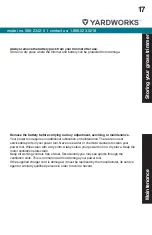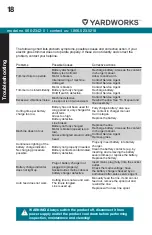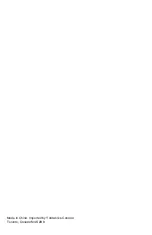
model no. 060-2342-0 | contact us: 1.866.523.5218
14
TRIMMING
Position the trimmer head as shown in Fig. G for
trimming.
Keep the bottom of the trimmer head just above the
ground and at an angle. Allow only the tip of line to
make contact. Do not force trimmer line into work area.
Do not cut wet grass because it tends to stick to the
trimmer head and guard, prevents proper discharge
of grass clippings, and could cause you to slip and fall.
Regularly remove clippings and dirt around the trimmer
head with the trimmer switched off.
Work rhythmically, stand firmly with your feet apart. Cut
from right to left so the trimmings will be
thrown away from the work area.
Do not move the trimmer too fast as this will result in ineffective cutting and possible
damage.
Cut repeatedly from up and down in layers when the grass is very high. Keep the trimmer
head at an angle of about 30° to the ground when trimming. Avoid pressing it against the
ground as this can ruin the lawn and damage the trimmer head.
If you find that the nylon line is too short follow the instruction as in “Automatic line feed
system“ or “To manually feed the line”.
NOTE: Let the cutting device do the work. Let it work at its own pace, never press it into the
area to be cut.
AUTOMATIC LINE FEED SYSTEM (SEE FIG. H)
When initially switching on the trimmer, a small length
of line is fed out. A ‘clattering’ noise will be heard when
the lines hit the line cutter. DO NOT BE ALARMED this
is quite normal. After about 5 seconds the line will be
cut to the correct length and the noise will reduce as
the motor receives full speed.
If the noise of the line being cut can’t be heard,
more line will be fed out. To feed more line, it is first
necessary to allow the trimmer to stop completely, and
then restart, allowing the motor to reach full speed.
Repeat above until you hear the lines hitting against
the line cutter. (Do not repeat this procedure more than 6 times).
Operation
F1
G
F2
13
H
J
I
K







































